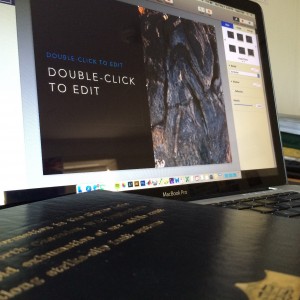
Most of us consider the submission of our bound theses to be the end of the Princeton road. While this is definitely a huge accomplishment and a major milestone along the path (congratulations!), we shouldn’t forget that many of us are still required to communicate our findings as a presentation to the wider community. In fact, this last step is arguably even more important than the bound thesis itself – what good is your hard-earned discovery if no one knows about it?
But the presentation brings with it some unique challenges – how do you communicate your findings to a general (or at least wider) audience? How do you condense one year’s worth of work into just 10 minutes?
I think the best way to go about answering many of these questions is to put yourself into the audience’s shoes. I’m sure you’ve watched a number of presentations before – ask yourself, what did you like about them? What didn’t you like about them? At what points during the presentations did you become confused? At what points were you bored?
The answers to these questions vary between disciplines, but a few universal tips emerge:
- A slide with only text (or large chunks of text) is almost always bad – you force the audience to choose between reading the slides or listening to you. Instead, use keywords, figures, diagrams… anything that the audience can look at WHILE they listen to you. In other words, your slides are supposed to supplement what you are saying – not replace you.
- It’s impossible to say everything that you have learned over one year (or one semester) in 10 minutes. It’s ok to be selective! It’s better to focus on a few key points and make sure the audience understands you than to try and cram everything in and completely lose your listeners.
- What key points should you focus on? To answer this question, you should remind yourself of the motivation behind your thesis. Observations that are peripheral to this motive are likely unnecessary for your presentation.
- Sometimes it’s a good idea to have a few “appendix” slides at the end of your presentation that you reserve for question time. In these slides, it’s useful to put things related to those points you chose to ignore during the presentation itself. This way, if someone asks you a question about it, you can blow them away with an unexpectedly well-constructed answer.
- A really important question you should ask yourself is – when do I get bored during other people’s presentations? Even if you’re explaining yourself exceptionally clearly, if the audience isn’t listening there’s not much of a point. So throw in some colorful diagrams! Crack a joke or two!
- Practice – especially the beginning of your talk. Even if you have a brilliant slideshow ready to go, being nervous and unprepared can ruin your presentation. If you can, practicing in front of a live audience (like your friends or classmates) and getting their feedback is the best way to prepare yourself for the actual talk.
And with those quick tips comes an end to my time as a writer for PCUR. Thank you to everyone who tuned in, and I hope my words were helpful, if only marginally!
My final piece of advice to you is to remind yourself why you’re doing research in the first place. It’s easy to get lost in the process of it all, but remember that you are advancing the frontiers of human knowledge. You are contributing, even if only in a minor way, to the progress of mankind. It is only with research that our society has become as advanced as it is today, and it is only with research that our society will continue to advance into the future. So take pride in your work, and continue to make our world a better place.
Best of luck with all of your future endeavors!
– Yuem Park, Natural Sciences Correspondent

